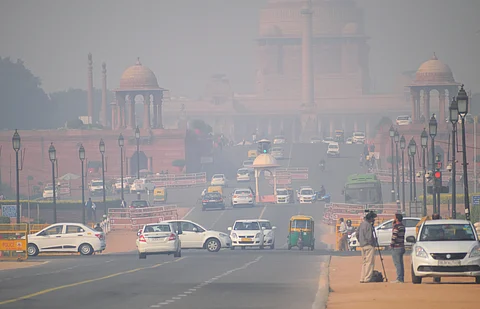

A new four-year air quality study has revealed alarming levels of particulate pollution across India's major urban centres.
The analysis by Respirer Living Sciences — a Delhi-based climate-tech startup — found that all 11 metropolitan cities monitored consistently breached the National Ambient Air Quality Standards for PM10 between 2021 and 2024, with pollution levels remaining stubbornly high despite various policy interventions.
The most severe conditions were observed in northern India, where cities like Delhi, Patna, Lucknow and Chandigarh recorded particularly dangerous air quality.
Delhi's Anand Vihar monitoring station measured PM10 concentrations of 313.8 micrograms per cubic metre in 2024, while Patna's Samanpura area saw levels reach 237.7 micrograms per cubic metre — all far exceeding the national safety standard of 60 micrograms per cubic metre.
Even cities traditionally considered to have better air quality failed to meet standards.
While some southern and coastal cities like Bengaluru, Chennai and Hyderabad showed modest improvements at certain monitoring sites, none managed to achieve consistent compliance with safety norms over the four-year period.
Ronak Sutaria, Founder and CEO of Respirer Living Sciences, emphasised the gravity of the findings. "This isn't about occasional spikes — we're seeing chronic, year-round pollution that exposes urban populations to dangerous particulate levels on a sustained basis," he said.
"Our data shows no evidence of a meaningful, long-term downward trend in most locations," Sutaria added.
The report identifies multiple contributing factors including vehicle emissions, industrial operations, construction activity, waste burning and seasonal agricultural burning.
It calls for stronger enforcement of existing regulations, expanded air quality monitoring networks and tailored solutions for different cities based on their specific pollution profiles.
Experts warn that addressing India's air quality crisis requires moving beyond temporary measures.
"We need to fundamentally rethink how clean air fits into urban development planning," Sutaria said.
"This means integrating air quality considerations across transportation, housing, energy and waste management systems rather than treating it as a standalone issue," he added.
The findings highlight the persistent challenge of particulate pollution in Indian cities, with millions of residents continuing to face prolonged exposure to unhealthy air despite various clean air initiatives launched in recent years.